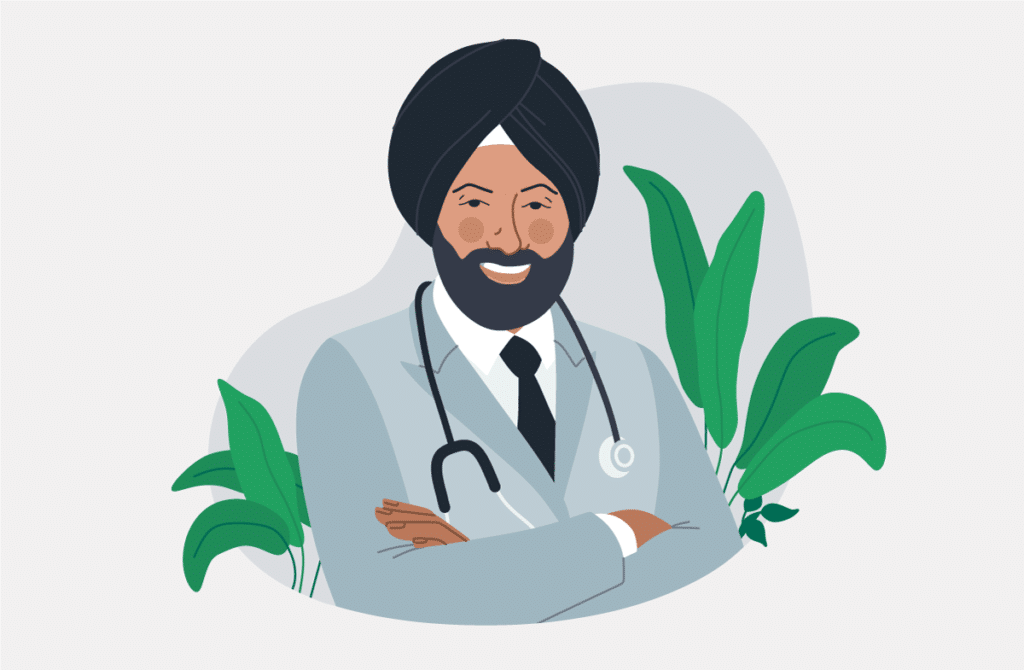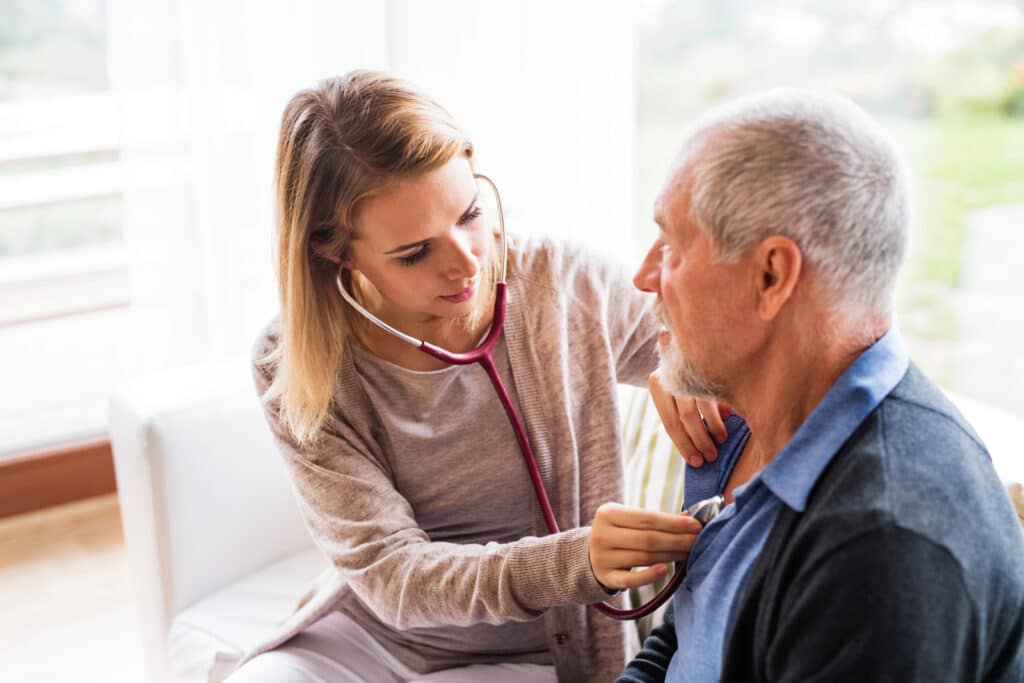What I Learned from the Other Side

Like all of us, I’ve been faithfully wearing my full PPE and rather cool ‘beekeeper’ PAPR hood each time I step into a residential aged care facility, or consult with patients at the clinic. I’m now used to it and even find it comfortable
But one practical issue I found was the difficulty involved with peeing when at facilities. My clever idea was to fluid-restrict in the mornings before my facility visits. During the day, of course, I’m nil by mouth—the copious cups of tea I’d normally share with the nurses are a distant memory.
This was all going swimmingly until a moment of reckoning two weeks ago. First, loin pain (which I tried to shrug off), then groin pain (harder to ignore) building to a crescendo that wouldn’t settle with diclofenac and sent me on a trip to the emergency department. The CT confirmed a renal stone.
It felt surreal being in the tribe to which things are done, rather than the tribe which does them. Being wheeled into the ED, having a Venflon inserted, being investigated, having medications prescribed and given to me. Then, on discharge, making sense of and charting a new pathway with my GP and outpatient services. It was a reminder that no one willingly chooses to be a patient.
But taking a ‘glass half-full’ approach, as healthcare professionals we can perhaps use experiences like this to our advantage. This was an opportunity to see healthcare services afresh through the eyes of patients and service users.
Today, this reflective view is especially important for the health and success of our GP practices. COVID-19 and the pandemic constitute a tidal wave of change. This is a once-in-a-generation shock that will have a profound impact on our emotions and our thinking—as individuals, families, communities and as a country. Our patterns of consumption, where and how we live, shop, work and interact are being impacted now and the aftershocks will continue. For GPs, COVID-19 and its aftermath will continue to make or break our practices, so it’s up to us to put in the legwork to truly understand patient trends if we are to adapt and evolve successfully.
So what did I learn through my experiences as a patient?
First, securing a quick and easy telehealth appointment with my GP was an immediate relief during my building colic pain. No need for a car journey to the practice, nor the agony of sitting in a waiting room. However, the lack of a system to allow instant communication between my GP and pharmacy dashed my hopes of obtaining analgesia quickly (ideally, the upcoming e-prescribing rollout will address this).
My experience at the ED prompted other ideas about how technology could change the patient experience. For example, how useful it would have been to be able to shop around and see which ED was quiet! This would have helped me to socially distance and make better use of healthcare capacity. If we allowed people to see real-time data on ED waiting times, this could help smooth the peaks and troughs of demand.
I saw more opportunities for technology to enhance the patient experience after I was discharged. I was asked to book an outpatient appointment and attend a clinic one week later. Instead, I opted for a telehealth urology appointment organised by my GP, and have received friendly text messages from my GP and the urology clinic.
I’m lucky to have a regular GP, but if I didn’t, I wonder how I would choose one? In a world where I can shop around for other products and services, why can’t I get a sense of which GPs are available and what they’re like as people? The chance to perhaps watch a short video in which GPs introduce themselves would allow me to see if I find them friendly and help me decide whether this is someone I would want to get to know as my family doctor. We may even decide to select different GPs for different tasks. I can imagine wanting to see one type of GP for a quick problem, and another to discuss an issue in-depth.
My telehealth appointments showed just how effective this type of consultation can be. I foresee the vast majority of consultations being done by video in the future, particularly for working-age people. Why would we squeeze commuting to a clinic and sitting in a waiting room into an already jam-packed day? In my case, I know I would be more likely to attend appointments by video—clinic visits would be reserved for physical exams or specific interventions, such as minor surgery or investigations.
There are benefits here for GPs too. As just one example, the ability telehealth offers to know what patients are attending for should cut down on waiting room times and allow for better social distancing, even in a post-COVID-19 world. (I shudder to think how many cases of influenza we have unwittingly cultured in our practice waiting room petri dishes over the years.)
Of course, there will still be a place for in-person attendance at our clinics. In-person visits will continue to fit with the needs of children and older patients, for whom seeing and hearing so often need to be augmented by touch and our olfactory senses. Perhaps there is another opportunity here to re-purpose our consulting rooms so they are more inviting and geared toward the needs of these specific groups.
I was jolted, most unwillingly, into joining the patient community, and I’m immensely grateful to my healthcare team. Their work means that I now have the luxury of being able to draw on that experience for my own research as my team and I consider how we evolve.
But I needn’t have waited for renal colic—I wouldn’t wish that on anyone! Right now, we can all shift gears and see our practices afresh from the perspective of patients. Connecting with that neighbouring tribe, asking them to show us what we don’t see, and involving them in co-designing the direction in which we might grow, will help our practices flourish during and after the pandemic.



